The Compliance Workgroup of the IVLV (Industry Association for Food Technology and Packaging e. V.) is currently intensely focused on the developments and plans by Brussels politicians regarding printing inks, packaging materials and recycling.
By Alfons Strohmaier
The meeting of the IVLV Compliance Workgroup was held recently with some 50 attendees in the city of Freising/Germany under the new title of ”Future Days”. Dipl.-Ing. Tobias Voigt, CEO of the Industry Association for Food Technology and Packaging e. V. (IVLV), expressed his pleasure that the meeting could be held in person now after the two-year pause. The gathering was moderated by the workgroup‘s chairman Josef Sutter from the hubergroup Deutschland GmbH, a supplier of state-of-the-art inks and varnishes. Mr Sutter passed on the chairperson function to Dr Monika Tönnießen, Head of Food Safety Compliance – Global Food Safety, Product Safety and Regulatory Affairs at Henkel AG & Co. KGaA. The deputy is Markus Hoffmann, Product Safety Manager EMEA at the Amcor Flexibles Kreuzlingen AG.
Dr Angela Störmer from the Fraunhofer Institute for Process Engineering and Packaging (IVV) will continue serving in her role as the workgroup‘s scientific supervisory board. In her opening speech, she provided information on the current changes in the recycling legislation. The Recycling Regulation 2022/1616 took effect on 10 October 2022, covering every type of recycled plastic and recycling technologies within the field of application: mechanical and chemical recycling, the recycling of products from a closed, controlled product chain as well as the use of recyclates behind a functional barrier.
Among other things, recyclers must convey a summary of the Compliance Monitoring Summary Sheet (CMSS) for every decontamination system to the responsible national authority within one month from the start of production. With new types of technology in particular, detailed rationales, scientific evidence and studies on microbiological safety are required from the developers. This includes the description of the contaminant content in the input material, the efficiency of decontamination and the transfer to food products.
Dr. Störmer emphasized that the new regulation is highly complex and places great technical and time-related requirements on the national bodies.
The new requirements regarding mineral oil analytics were addressed by Gary Bastidon from the Institut Kirchhoff Berlin, a part of Mérieux NutriSciences. According to him, a solution for the limitations of the standard method HPLC-GC-FID is available with GCxGC-TOFMS, which uses a mass selective detector instead of the previous, unspecific detector to provide a qualitative result, rather than a purely quantitative result. This enables a characterization according to substance classes to be made, rather than the sum of MOSH/MOAH.
Mr Bastidon emphasized that compliance work means finding the missing part of the puzzle, whereby different inspection approaches are relevant, depending on the particular problem.
Lisa Hetzel, Romy Fengler and Dr Störmer, all from Fraunhofer IVV, presented literature studies (Lisa Hetzel) and their own work within the framework of the project ”IVLV Migration from Paper and Cardboard in Real Food Products in Comparison with Food Product Simulations”. According to Romy Fengler, the confrontation with the issue of migration from paper and cardboard has already been around for a long time, including in the first IGF project “Minimization of Mineral Oil Migration” that ran from 2016 to 2018. The project
focused on measuring and predicting the migration of mineral oil hydrocarbons from packaging to food products. Additionally, since 2020, there have been several publications on migration experiments with food products (simulations). The IVLV project “Paper Migration 2022” includes the experiences of past projects and shows that the possibility of realistic inspection with small thresholds is essential for compliance inspection. The scientists, however, point out that the precise mechanisms of migration, both in the carton itself as well as at the interface to food products, are “not yet adequately understood.”
Dr Elisabeth Pinter from OFI – Austrian Research Institute provided insights from scientific projects with information on the IGF project “microplastic@food” for the analysis of microplastic in food products and packaging (by June 2023) and the follow-up project “MicroplexFood” (from middle/end of 2023). The two-year project for the industry will be aimed at researching the presence/absence of microplastic in complex food products matrices and identifying the potential input sources. Together with Dr Frank Welle (Fraunhofer IVV) and Dr Bernhard Rainer (FH Campus Vienna), Dr Pinter then explained the IGF “PolyCycle” project and the follow-up project, “SafeCycle”. Against the backdrop of the strict, highly conservative EFSA regulations for the application of plastic recyclate in food products, the two-pronged issue is the development of a test strategy for the comprehensive safety analysis of the recyclates.
The meeting focused on several things, including many other scientific details such as the different mechanisms involved in the transfer of printing ink components in packaged food products, the stability of analysis solutions, and the identification and elimination of sources of contamination.
The other main focus was on societal debates and political plans, in particular the European Green Deal that the EU has announced. According to this ambitious vision, the EU economy is to be transformed into a global pioneer for a sustainable future. Two points here have an enormous effect on food product contact legislation: the zero-contaminants target for a hazard-free environment, and the demand for a fair, healthy and environmentally friendly food products system.
“The NGOs now have the upper hand at the meetings. Actual practicians from the industry and affiliated associations are seen as apparent lobbyists and are scarcely heard anymore,” said Dr Ernst Simon, CEO of the FPE Flexible Packaging Europe association and Dr Hermann Onusseit (Onusseit Consulting) in sharp criticism of the plans from Brussels, citing them as divorced from reality and practice. One example is the non-binding communication paper from October 2020 called “CSS Chemicals Strategy for Sustainability” featuring an appendix listing over 50 individual measures.
Dr Simon highlighted one planned measure: “One substance, one assessment”. This encompasses one chemical only being assessed by one of the numerous EU agencies that
exist today. While the work of the EFSA is based on the risk assessment for a substance, the European Chemistry Agency (ECHA) is aimed at a hazard assessment, i. e., a general ban on risky substances. According to the experts, this would amount to a declaration of bankruptcy, both in technical and in economic terms.







